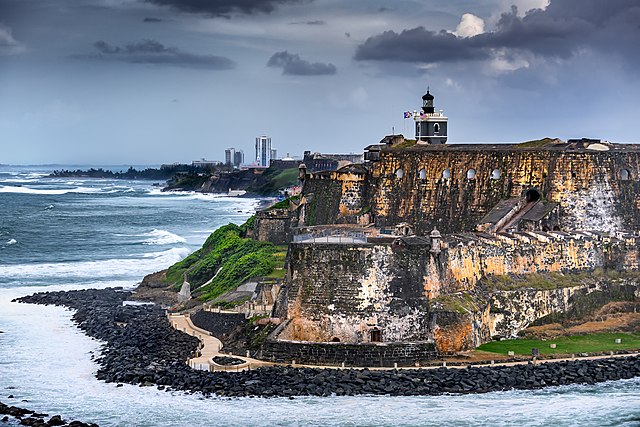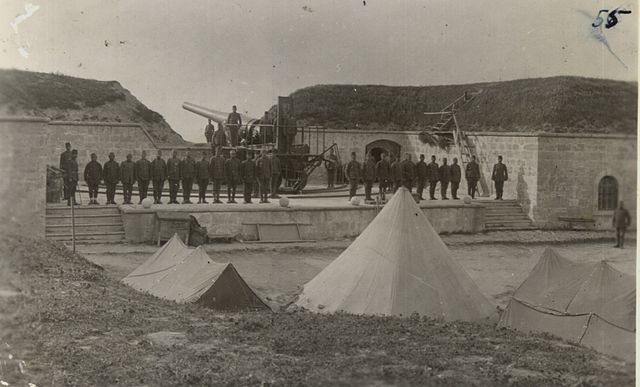Fort Sumter is a sea fort built on an artificial island near Charleston, South Carolina to defend the region from a naval invasion. It was built after British forces captured and occupied Washington during the War of 1812 via a naval attack. The fort was still incomplete in 1861 when the Battle of Fort Sumter occurred, sparking the American Civil War. It was severely damaged during the battle and left in ruins. Although there were some efforts at reconstruction after the war, the fort as conceived was never completed. Since the middle of the 20th century, Fort Sumter has been open to the public as part of the Fort Sumter and Fort Moultrie National Historical Park, operated by the National Park Service.
Fort Sumter
Fort Sumter was photographed in 1861 when it was still intact.
Letter from William H. Seward advising President Lincoln on the obstacles in resupplying Fort Sumter, March 1861
[Top] A photographic view of the Hot shot Furnace at right shoulder angle and a 10-in. columbard cannon pointing to Charleston;[Bottom] Exterior view of Gorge and Sally Port Ft Sumter April 1861 after its surrender
Coastal defence and fortification
Coastal defence and coastal fortification are measures taken to provide protection against military attack at or near a coastline, for example, fortifications and coastal artillery. Because an invading enemy normally requires a port or harbour to sustain operations, such defences are usually concentrated around such facilities, or places where such facilities could be constructed. Coastal artillery fortifications generally followed the development of land fortifications, usually incorporating land defences; sometimes separate land defence forts were built to protect coastal forts. Through the middle 19th century, coastal forts could be bastion forts, star forts, polygonal forts, or sea forts, the first three types often with detached gun batteries called "water batteries". Coastal defence weapons throughout history were heavy naval guns or weapons based on them, often supplemented by lighter weapons. In the late 19th century separate batteries of coastal artillery replaced forts in some countries; in some areas these became widely separated geographically through the mid-20th century as weapon ranges increased. The amount of landward defence provided began to vary by country from the late 19th century; by 1900 new US forts almost totally neglected these defences. Booms were also usually part of a protected harbor's defences. In the middle 19th century underwater minefields and later controlled mines were often used, or stored in peacetime to be available in wartime. With the rise of the submarine threat at the beginning of the 20th century, anti-submarine nets were used extensively, usually added to boom defences, with major warships often being equipped with them through early World War I. In World War I railway artillery emerged and soon became part of coastal artillery in some countries; with railway artillery in coast defence some type of revolving mount had to be provided to allow tracking of fast-moving targets.

Castillo San Felipe del Morro in Old San Juan, Puerto Rico
Castillo San Felipe de Barajas in Cartagena de Indias, Colombia
Ottoman fortification and redoubt of the Dardanelles Fortified Area Command during World War I
Suomenlinna, a sea fortress from 18th century in Helsinki, Finland




![[Top] A photographic view of the Hot shot Furnace at right shoulder angle and a 10-in. columbard cannon pointing to Charleston;[Bottom] Exterior view](https://upload.wikimedia.org/wikipedia/commons/thumb/5/5d/The_Photographic_History_of_The_Civil_War_Volume_09_Page_046.jpg/423px-The_Photographic_History_of_The_Civil_War_Volume_09_Page_046.jpg)



